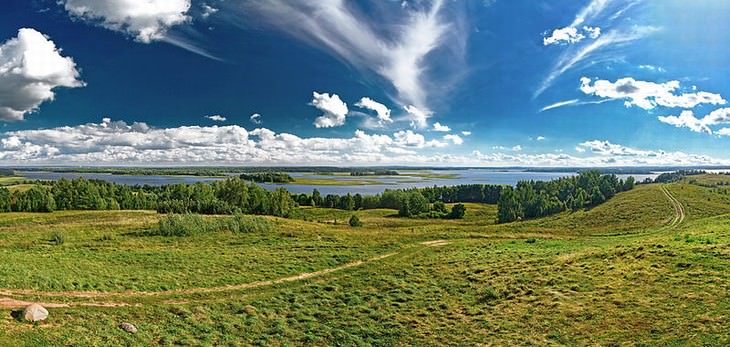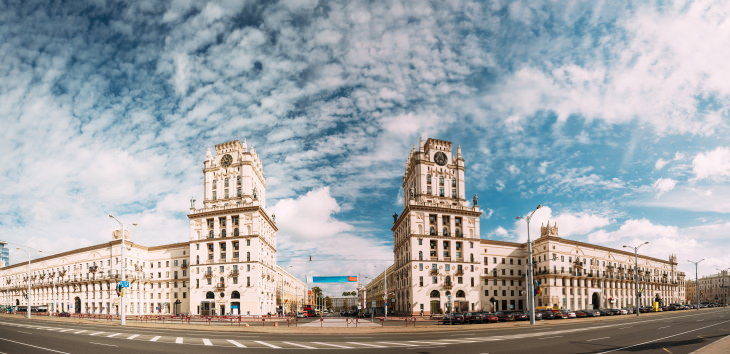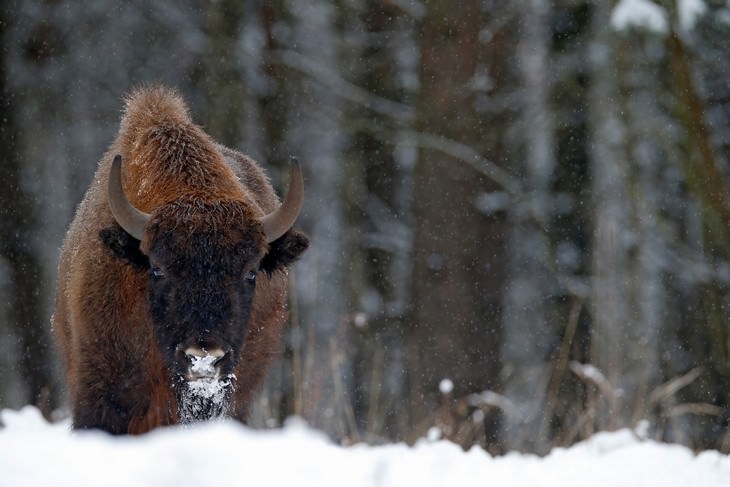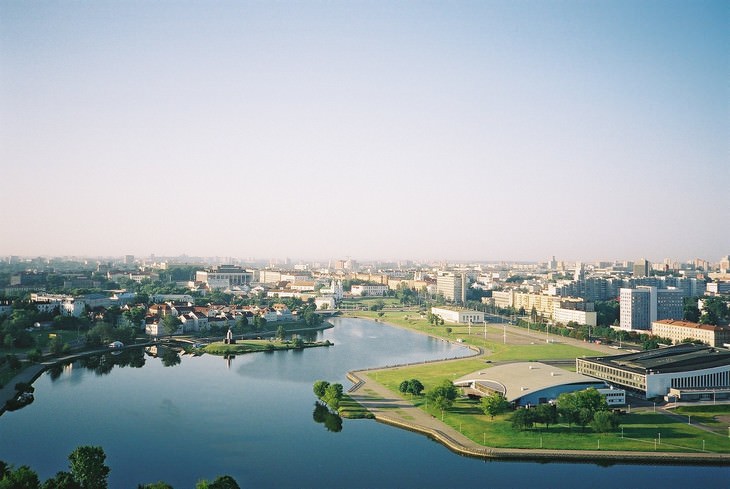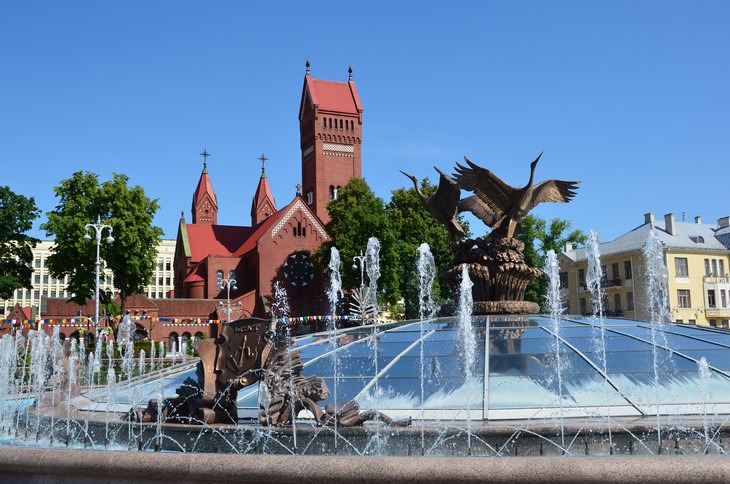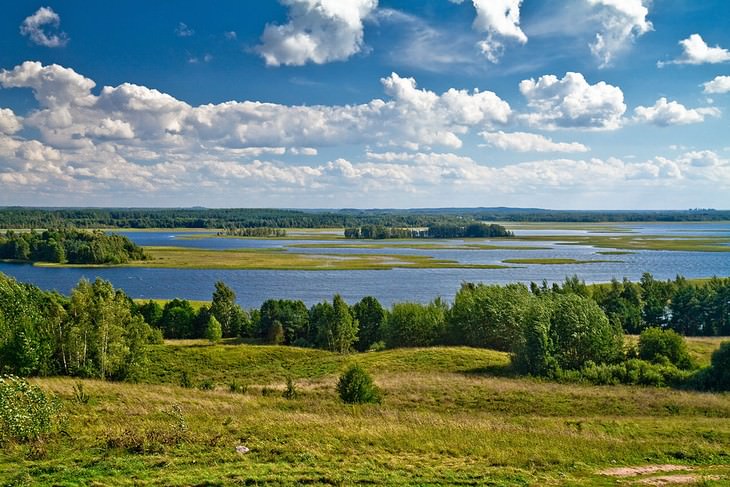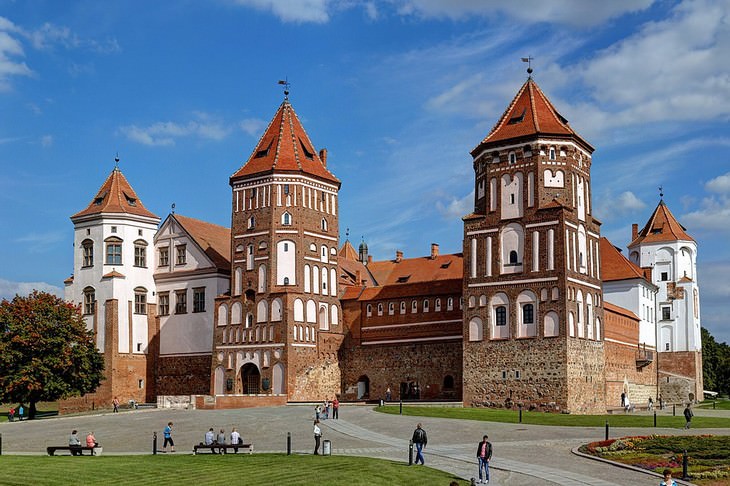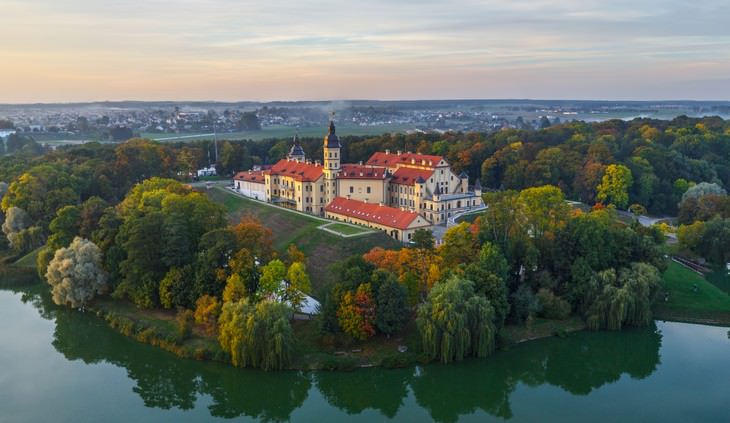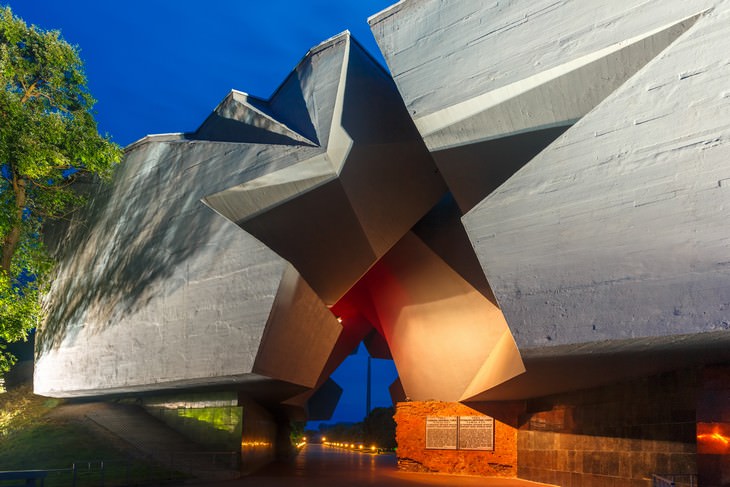Tourism in Belarus
As mentioned previously, tourism isn't widely commercialized in Belarus, but that doesn't mean there's nothing to see. In fact, tourists that prefer a relaxing, crowd-free visit may like Belarus even more than other European countries.
Many tourists fall into the trap of believing that visiting Belarus in impossible without a special visa, likely because of the infamous nickname given to the country, “the last dictatorship in Europe”. This simply isn’t true, as travelers from most countries don’t require a visa to stay in Belarus up to a month, as long as they enter the country through the Minsk Airport.
Another concern tourists can have is the political system in Belarus. Technically speaking, the country is a republic, but the president, Alexander Lukashenko, who has been the head of state for 25 years (Belarus has been a sovereign country for 29 years), holds the majority of the power.
The country also has very close relations with Russia, which is not surprising given that Belarus had been included in the Russian Empire, and later, in the USSR for nearly two centuries, during which the country had gone through an intense period of russification.
Even today, the vast majority of Belarus’ exports are to the Russian market, and Russian is the second official language in Belarus, with only 23% percent of the population speaking Belarusian at home. That being said, this long-standing union with Russia has been, in many ways, a success for Belarus, as it is the most developed country in the former USSR.
It is also one of the few postsoviet nations that preserved Soviet architecture, so if you’re curious to see what a Soviet city looked like, you should definitely put Minsk on your list of places to see.
Tourist Attractions in Belarus
1. Belovezhskaya Pushcha National Park
The highlight for the nature-loving tourist in Belarus is certainly the Belovezhskaya Pushcha National Park, as it is exactly like the forests that once covered the entirety of Europe in Medieval times.
This primeval forest spreads across the border between Poland and Belarus, and apart from incredible tall trees and luscious flora all around, the national park is home to large free-roaming mammals, such as bison, elk, wild horses, and wild boar. The park has been a UNESCO World Heritage Site since 1979.
2. Minsk
The capital of the country, Minsk, will be the point of arrival for the vast majority of tourists, and apart from an abundance of curious Soviet-era buildings, numerous biking trails zipping through the many green parks in the city. There are not particularly many historical buildings in the city, as the majority of them were destroyed during WWII. However, Minsk is very spacious, incredibly clean and affordable.
As any capital city, Minsk has an abundance of museums, of which The National Art Museum of the Republic of Belarus is considered the most recognized, as well as a splendid opera house. Keep in mind, though, that nightlife in the city is not very lively and most places close by 12 PM.
3. Braslav Lake Area
Around 20,000 years ago, during the last glacial period, the 700 square kilometer (270 sq mi) area that now contains the Braslav lakes was covered with ice. Slowly, the glacier had started to melt, and as it did, it created numerous lakes of irregular shapes and various sizes, a truly beautiful sight to behold. The area also has a unique ecosystem particularly abundant in different bird species, which is why bird watching is a popular pastime in the Braslav Lake Area.
4. Mir Castle
The 16th-century castle and fortress complex in the Grodno region of Belarus is one of the most beautiful ancient landmarks in the country and a UNESCO World Heritage Site. The castle was built over the course of nearly a century, and so stylistically speaking, it’s a mix of Polish Gothic, Baroque and Renaissance styles.
In 1812, the castle was destroyed in battle and was abandoned for almost a century, but it was then lovingly rebuilt at the end of the 19th century. Castle visitors can also take a stroll through the adjacent flower gardens and a beautiful artificial lake.
5. Central Botanical Garden
While you’re in Minsk, we recommend you drop by the magical botanical garden, situated in the city center. The gardens feature beautiful flower arrangements, a lake with swans, as well as long alleys, perfect for a daytime stroll. Visitors say the garden is very easy to access and it’s a favorite tourist destination in Minsk.
6. Belarusian Cuisine
On a visit to Belarus, you must try some of the local cuisine, although, fair warning, it’s quite potato-heavy, as most traditional foods feature the root vegetable in one way or another.
The most famous Belarusian dish is fried potato pancakes (draniki), which are savory, crunchy and served with sour cream on the side. Other traditional dishes include potato pie (babka) and a variety of meat-based dishes, such as pork stew called machanka and meat served with sauce and buckwheat pancakes (vereshchaka).
7. Niasviž Palace
The Niasviž Palace is one of the most beautiful castles in Belarus, located only 30 km (18 miles) from the Mir Castle. The palace was built in 1584 and was rebuilt several times over, so its architectural style is very eclectic. Niasviž is a residential castle belonging to the Radziwiłł family, a family of wealthy Lithuanian aristocrats that later moved to Poland. The castle is yet another UNESCO world heritage site and it functions today as a National History and Culture Museum.
8. Brest
The city of Brest is one of the oldest cities in Belarus, with first mentions of the city dating back to the 11th century as part of Kievan Rus. Later, the city was under Lithuanian, Polish, and Russian rule, and all these influences contributed to the overall look of the city.
Probably the most famous landmark in Brest is a 19th-century Russian fortress known for resisting the Nazi forces during WWII, for which it got the nickname “Hero Fortress”. Today, the fortress houses a WWII museum open to visitors. If you’re not particularly interested in WWII history, however, you can also visit the Berestyle Archaeological Museum, which features the excavations of a 13th-century old wooden town originally existing just outside Brest.

